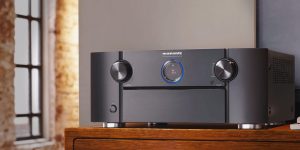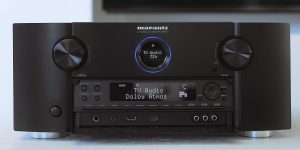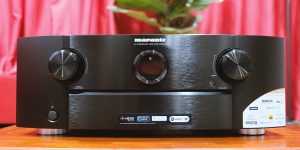With the advancements in surround sound technology, we have witnessed the emergence of three major surround sound formats: Dolby Atmos, DTS:X, and Auro-3D. In this article, I will explain and analyze these formats in-depth, elucidating their unique features. We will also discuss the equipment needed to optimize your home theater for these formats.
The surround sound explained will give you a better understanding of the intricacies of this subject area. We will compare and contrast Dolby Atmos, DTS:X, and Auro-3D’s strengths and weaknesses while considering factors such as installation requirements, cost, and content availability. By the end of this article, you will have a solid grasp of these technologies, empowering you to elevate your home theater audio experience to new heights.
The evolution of surround sound

Surround sound has come a long way since its inception, evolving from simple multi-channel audio systems to today’s cutting-edge, immersive audio experiences. To fully appreciate the significance of modern surround sound decoding formats like Dolby Atmos, DTS:X, and Auro-3D, it is essential to examine the journey of 3D sound technology from its early days.
In the early stages, Dolby Digital and DTS (Digital Theater Systems) emerged as the two primary multi-channel digital surround sound audio formats, with Dolby Digital 5.1 and DTS 5.1. These formats relied on a 5.1-channel configuration, which included five main speakers (front left, center, front right, surround left, and surround right) and one subwoofer. This setup was designed to provide a more immersive audio experience than the traditional stereo systems by enveloping the listener with sound from different directions.
As technology progressed, surround sound systems evolved to incorporate more channels and improved audio quality. As a result, Dolby Digital Plus and DTS-HD Master Audio emerged as the successors of the original Dolby Digital and DTS formats. These high-definition audio formats offered lossless compression, providing superior audio fidelity and supporting up to 7.1 channels for even more immersive soundscapes.
The introduction of Dolby Atmos, DTS:X, and Auro-3D marked a new era in surround sound technology. These formats incorporate object-based audio, which allows sound engineers to position individual sounds as ‘objects’ within a 3D space, creating a more realistic and immersive audio experience.
Importance of surround sound in immersive experiences

The impact of surround sound on the overall immersion of a home theater experience cannot be overstated. While high-definition visuals are undoubtedly essential, audio plays an equally critical role in drawing the audience into the story and creating a sense of presence.
Humans rely on our auditory system to localize sounds in our environment, which helps us navigate and understand our surroundings. Surround sound formats, such as Dolby Atmos, DTS:X, and Auro-3D, consider this spatial information using object-based audio technology. This approach allows sound designers to position individual audio elements with precision within a 3D space, providing a more accurate representation of the sound environment as intended by the creators.
Dolby Atmos

Dolby Atmos stands out from its predecessors by incorporating object-based audio technology. Unlike traditional channel-based audio systems, Dolby Atmos allows sound designers to place audio elements as individual “objects” within a three-dimensional space.
One of the key benefits of Dolby Atmos is the addition of height channels to the surround sound setup. This vertical dimension enables sound to be projected around the listener and above them, creating a truly immersive soundscape.
Dolby Atmos supports up to 128 simultaneous audio objects and can scale the audio experience according to the specific speaker configuration in a home theater system.
DTS:X

DTS:X, launched in 2015, is a surround sound format developed by DTS, Inc. as a competitor to Dolby Atmos. Like its main competitor, DTS:X utilizes object-based audio technology, allowing sound designers to place individual audio elements as “objects” within a three-dimensional space.
One notable feature of DTS:X is its flexibility and adaptability to different speaker configurations. Unlike Dolby Atmos, which requires specific height channel speakers, DTS:X can work with any standard speaker setup without requiring dedicated height channels, making it more accessible to users with existing home theater systems. In addition, it does not necessitate additional hardware upgrades.
DTS:X presents a highly flexible and adaptable “tool” that leverages object-based audio technology to create immersive soundscapes. With its unique features, such as Dialog Control and compatibility with various speaker configurations, DTS:X has become popular worldwide.
Auro-3D

Auro-3D, developed by the Belgium-based company Auro Technologies, is another immersive surround sound format that emerged in 2011. Initially designed for commercial cinemas, Auro-3D later expanded to home theaters, providing an alternative to Dolby Atmos and DTS:X
Auro-3D’s primary innovation lies in its approach to height channels, which it refers to as the “Auro-3D speaker layout.” This layout comprises three vertical layers: the traditional ear-level layer, a height layer, and a top layer (also known as the Voice of God channel), typically a single overhead speaker. Combining these layers results in a hemispherical audio experience, enveloping the listener in a more natural and lifelike soundscape.
Another unique feature of Auro-3D is its ability to mix non-Auro-3D content, known as “Auro-Matic” up mixing. This functionality enables users to enhance the audio of standard stereo or multi-channel content, transforming it into a more immersive experience by utilizing the height and top layers of the Auro-3D speaker layout.
Auro-3D supports various speaker configurations, from 9.1 channels (including five ear-level speakers, one subwoofer, and three-height speakers) to more advanced setups.
Though not as widely available as Dolby Atmos or DTS:X, Auro-3D content can be found on select Blu-ray releases and streaming platforms. By the way, in addition to movies, Auro-3D has been utilized in music production and live events.
Dolby Atmos vs. DTS:X vs. Auro-3D
| Feature | Dolby Atmos | DTS:X | Auro-3D |
|---|---|---|---|
| Object-based audio | Yes | Yes | Yes |
| Height channels | Yes | Optional (more adaptable) | Yes (three vertical layers) |
| Maximum speaker layouts | Up to 128 audio objects | Up to 32 speaker layouts | Up to 13.1 channels |
| Dialog Control | No | Yes | No |
| Upmixing non-native content | Dolby Surround Upmixer | DTS Neural:X / DTS:X Pro | Auro-Matic |
| Content availability | Widely available | Widely available | Less available |
| Required hardware | Dolby Atmos compatible AV receiver and speakers | DTS:X compatible AV receiver and speakers | Auro-3D compatible AV receiver and speakers |
While all three formats utilize object-based audio technology for immersive audio experiences, they differ in their approach to height channels, speaker configurations, and additional features. Dolby Atmos requires specific height channel speakers but offers a vast range of audio objects, while DTS:X is more adaptable to different speaker setups and provides Dialog Control. Auro-3D distinguishes itself with its unique three-layer speaker layout and Auro-Matic mixing capabilities.
In terms of content availability, both Dolby Atmos and DTS:X have a broader range of content across movies, television shows, and video games, whereas Auro-3D is less prevalent.
Choosing the right format for your needs
When choosing the right surround sound format for your needs, consider the following factors:
- Content availability: assess the content you typically consume, such as movies, video games, etc.
- Existing equipment: evaluate your current home theater setup and determine whether it is compatible with the surround sound format you are considering. DTS:X is more adaptable to existing speaker configurations, while Dolby Atmos and Auro-3D may require additional height speakers.
- Budget: consider the costs of upgrading your home theater system to accommodate new surround sound formats, including purchasing a compatible AV receiver and speakers.
- Room size and layout: analyze your room’s size, shape, and layout, as certain surround sound formats may work better in specific environments. For example, Dolby Atmos is known for its scalability, which makes it suitable for various room sizes.
- Ease of installation: if you plan to install the system yourself, consider the complexity of setting up the speakers and receiver.
These basic rules will help you determine which receiver to buy, which and how many speakers you need, and, most importantly, how to organically assemble a good home multimedia system with surround sound.




![Best 2-Channel Receiver [Expert Reviews and Buying Guide]](https://hometheaterology.com/wp-content/uploads/2023/11/best-2-channel-receiver-stereo-300x150.jpg)












